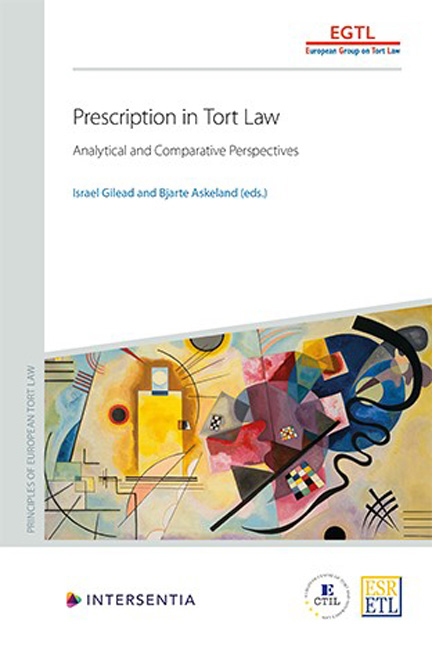Book contents
- Frontmatter
- Dedication
- Acknowledgements
- Contents
- List of Authors
- PART I THEORETICAL AND COMPARATIVE ANALYSES
- Analytical and Comparative Report
- Economic Analysis
- PART II PRESCRIPTION IN TORT LAW OUTLINED
- Case Scenarios
- Austria
- Belgium
- Czech Republic
- England and Wales
- France
- Germany
- Greece
- Italy
- The Netherlands
- Norway
- Poland
- South Africa
- Spain
- Switzerland
- United States
- European Union
- Appendix: Questionnaire
- About the Editors
Spain
Published online by Cambridge University Press: 22 December 2020
- Frontmatter
- Dedication
- Acknowledgements
- Contents
- List of Authors
- PART I THEORETICAL AND COMPARATIVE ANALYSES
- Analytical and Comparative Report
- Economic Analysis
- PART II PRESCRIPTION IN TORT LAW OUTLINED
- Case Scenarios
- Austria
- Belgium
- Czech Republic
- England and Wales
- France
- Germany
- Greece
- Italy
- The Netherlands
- Norway
- Poland
- South Africa
- Spain
- Switzerland
- United States
- European Union
- Appendix: Questionnaire
- About the Editors
Summary
INTRODUCTION
Under Spanish law, prescription (prescripción) is an institution provided for by statutory law. As regards tort law, its legal regime is laid down mostly by the Spanish Civil Code (hereinafter, CC), but its rules are generally considered confusing, incomplete and outdated. For this reason, it is commonly contended that an in-depth reform is strongly needed. In its present state, Spanish law on prescription is depicted as departing both from comparative law models and its own historical roots, something which is deemed to increase confusion. Some regions have their own statutory regimes, which are to a certain extent more advanced in several respects. Apart from the Navarra ‘Foral‘ regime, the Civil Code of Catalonia is more in line with the latest developments in other jurisdictions, as will be partly shown below. However, this report will mostly focus on Spanish law only.
The foundation of prescription is the convenience of putting an end to the exercise of rights in an‘out of time‘ way. That guarantees everyone a state of peace and tranquillity in which the person at stake can feel free of the possibility of being claimed against by another. The benefits of such a purge of claims is very variegated: the potential defendant does not need to keep the memories and the evidence of payment for an indefinite period of time; one does not need to take the risk of being sued in tort when adopting decisions or making ‘balances‘ all lifelong into account. Otherwise, all hereditary transmissions would have to be accepted under the benefice of inventory and the management of risk by tort liability insurers would be hindered to an unaff ordable degree. Prescription also makes it unnecessary to have to file a suit in order to eliminate a situation of uncertainty, which would otherwise remain perpetually open, among other advantages.
In present legal scholarship, the idea prevails that prescription has an objective foundation, namely that of providing legal certainty to social order, by giving legal force to situations which result after a certain period of time. Therefore the theory that prescription has a subjective grounding– and thus that it is based on a presumed abandonment or carelessness of the holder of the claim affected by prescription– is nowadays rejected by most authors.
- Type
- Chapter
- Information
- Prescription in Tort LawAnalytical and Comparative Perspectives, pp. 579 - 620Publisher: IntersentiaPrint publication year: 2020

